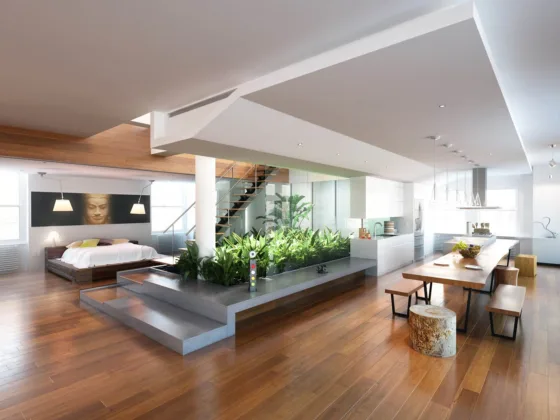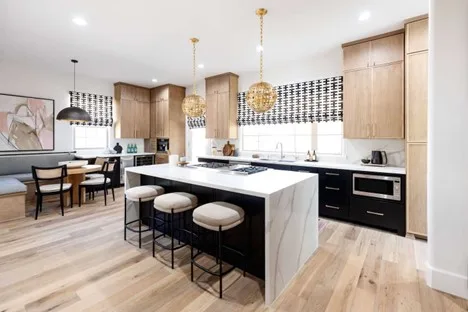Table of Contents Show
Are you considering adding more living space without completely tearing down your current home? An accessory dwelling unit (ADU) could be the answer to all your needs.
These units have become popular as people learn to value home renovations that won’t break the bank. If you are interested in learning more about adding an ADU and how it could improve the functionality of your home, keep reading.
Find out everything you need to know about what an ADU is and why it may be the perfect addition to your home.
Definition of an Accessory Dwelling Unit
An ADU is a small, independent living space located in the backyard or basement of an existing single-family or multifamily home. They provide an additional housing option for those who wish to maintain close proximity to the primary dwelling. This includes aging relatives or young adults transitioning from parental homes to independent living.
ADUs are also used as a house for rental income. It consists of a living area, kitchen, and bathroom and can range in size from 400-1200 sq ft. They may be detached from the main residence on a plot of land or constructed in the basement of an existing home space.
They are a great way to provide an affordable alternative to traditional home ownership. They can also be tailored to fit any family’s needs.
Benefits
ADUs come with many benefits that homeowners, renters, and the community at large can reap. They can be an affordable way to add extra space to an existing home. They can also provide additional space for aging family members, out-of-town guests, or a private studio.
Building an ADU also encourages urban density which can help reduce traffic and housing prices. They help reduce the demand for new construction. This preserves green space and natural resources.
Homeowners can benefit from the extra income the unit can bring in. It can also provide the potential for higher property values due to the added dwelling unit. Regardless of the size or style of the ADU, there are many benefits to taking advantage of this opportunity.
Planning and Permitting Requirements
Planning and permitting requirements for an ADU must be met before construction begins. Depending on the zoning of the property, a zoning review may be necessary, and construction must adhere to local building codes.
The local jurisdiction may require a development permit. This may also include local copies of plans and drawings stamped by an architect and engineer.
Utility connections and occupancy permits may also be required. The construction project may have to adhere to fire safety regulations, as well. It must pass all sewer, electrical, and energy efficiency inspections.
There may also be additional inspections during and after construction. It is important to follow all instructions from local authorities to ensure the ADU is legal and safe.
Cost Considerations
Cost considerations need to be carefully weighed by potential ADU builders. Before taking the plunge, builders must first understand the costs associated with the construction process.
Financing an ADU is a key factor. Building an ADU may require acquiring a loan or paying out of pocket. Labor costs, materials, and other construction costs will also factor into the total cost of the building process.
Builders also need to account for local permit costs and any other fees related to improving a property. Finally, builders must factor in long-term costs. This includes insurance, maintenance, and utilities related to the unit.
You should also take into account the cost of utility connections and outdoor improvements. This includes drainage, landscaping, and fencing. While costs can add up if not strategized properly, an ADU can be the perfect addition to a property.
Design Configuration
Design considerations include both internal and external factors. Internally, there needs to be adequate space for at least one bedroom, bathroom, kitchen, and living area. Other considerations include soundproofing, lighting, heating, and air conditioning.
Externally, the design should be of a size and shape that complements the existing house. The building should be energy-efficient and use sustainable materials so as to reduce the environmental impact. You should also secure it against pests and weather elements.
Lastly, take into account durability and longevity. ADUs should be built to last but should also be affordable and easy to maintain. Take all these design considerations into account when constructing an accessory dwelling unit.
Finding Professional Suppliers and Installers
Finding professional suppliers and installers of accessory dwelling units is anything but easy. Depending on the area, there may not be many of them. Do a thorough search to find the ones that are experienced and reputable in the industry.
Ask for references from people who have had similar jobs done. Check and compare the prices of different suppliers, and also make sure to read reviews from other customers.
Research access policies for accessory dwelling units so that buyers and builders know what area laws allow and don’t allow when it comes to building. Verify the contractor’s credentials and make sure they’re licensed, bonded, and insured.
Check with the BBB for reviews and ratings. You should also obtain multiple estimates and read all contracts thoroughly. This ensures the provider is giving the service and product requested.
You should look for a supplier who can provide you with a variety of designs and options to best fit your needs and preferences. A good installer has the tools and skills necessary to build a structure that is safe and secure.
Finally, to ensure the job is done properly, make sure the installer or supplier is properly licensed in the area. Shopping around for supplies and installers is well worth the time and effort for peace of mind and a stress-free result.
Accessory Dwelling Unit: The Perfect Home Addition
An Accessory Dwelling Unit provides a great opportunity to increase your home’s livable space and value. With a variety of design options and potential uses, ADUs can be tailored to perfectly fit the needs of your home.
There are a variety of benefits, so investing in an ADU is worth considering for potential homeowners. If you’re considering an ADU, reach out to a qualified design professional or contractor to get started. Keep reading our site for more life-changing tips and information.









